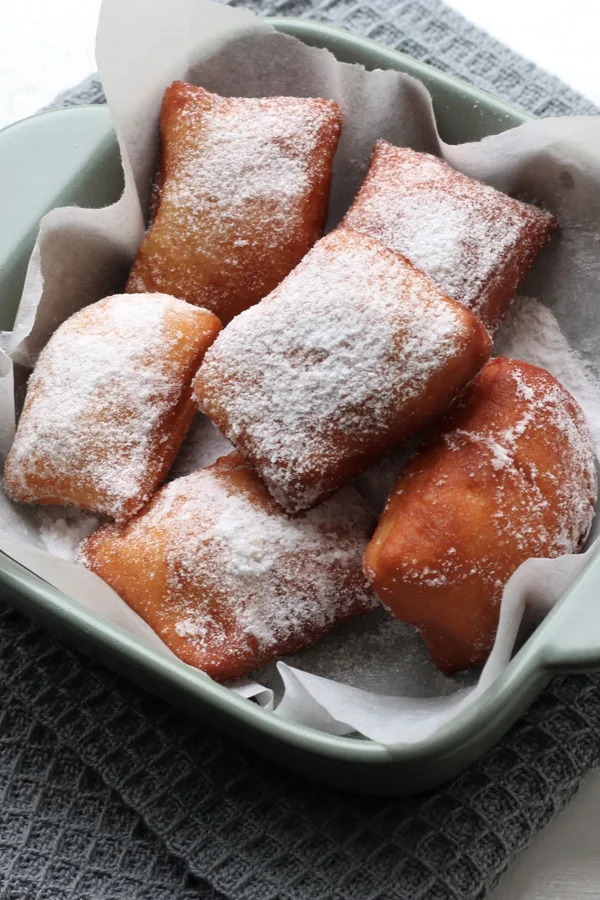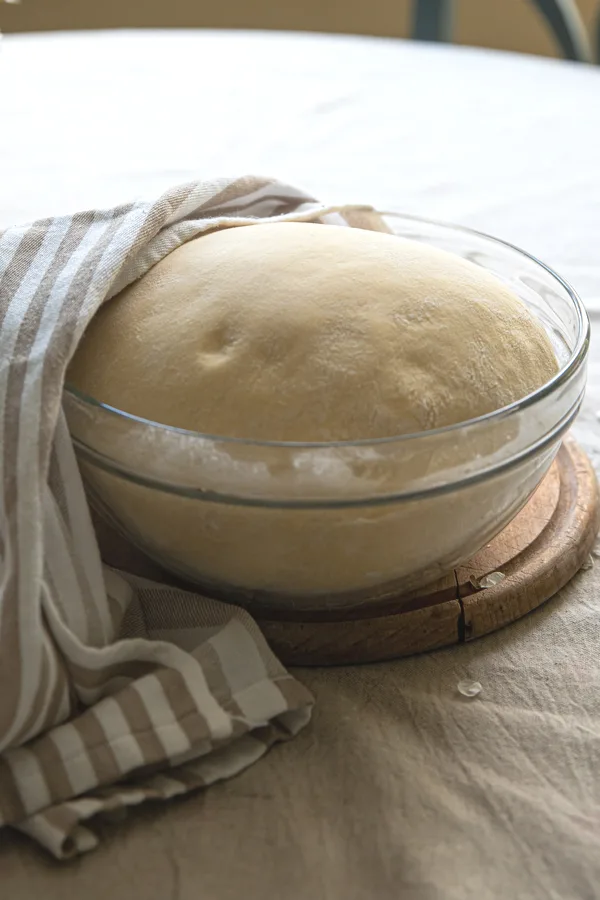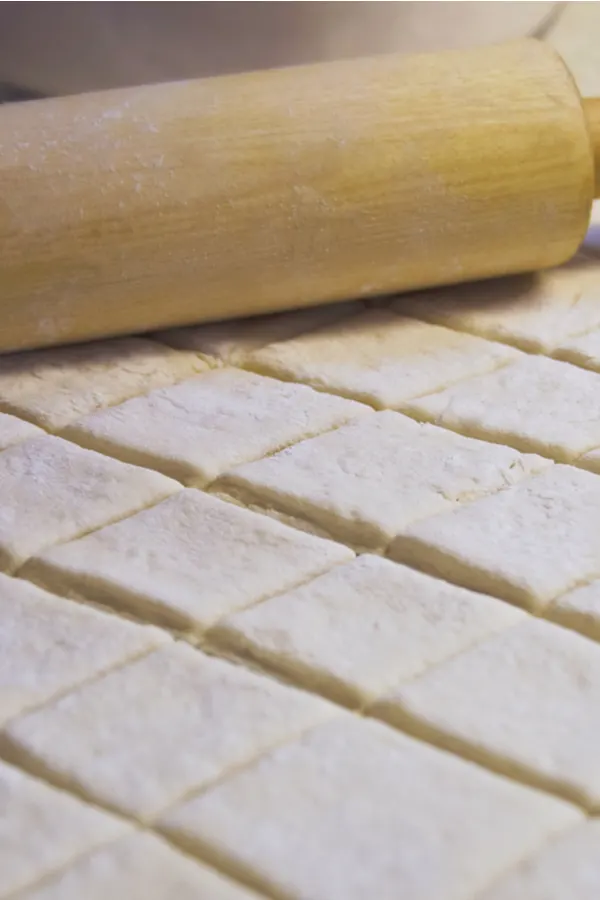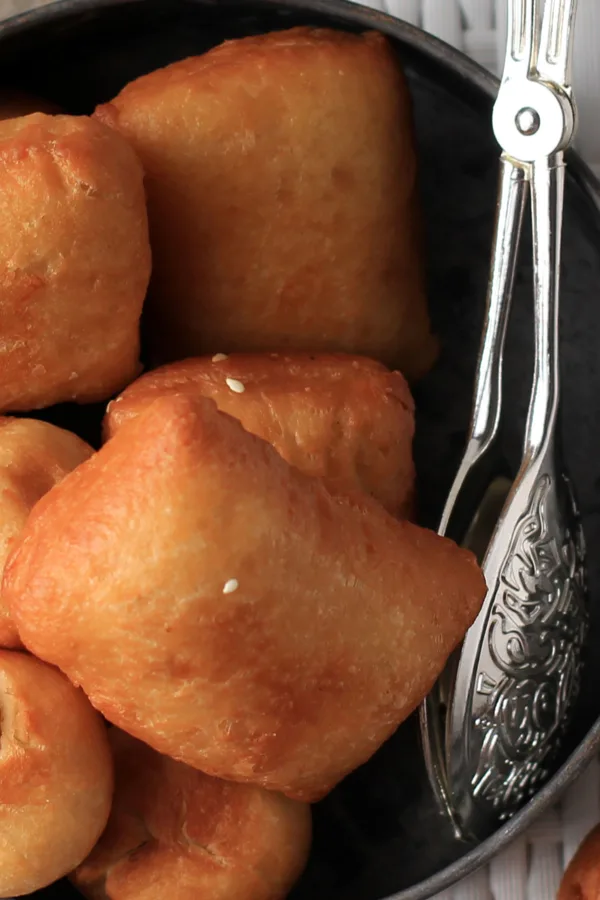If you have ever made a trip to New Orleans you most likely stopped at Cafe du Monde to try one or two of their famous French Beignets. And if you were lucky enough to get a seat, you might have even enjoyed a café au lait.
For those who have never been there, let me explain a little about this historic coffee and doughnut shop located in the French Market. This restaurant was established in 1862 and is open 24 hours a day, 364 days a year.
Besides their iconic dark roast coffee and chicory, they are most commonly known for their famous square, pillow like doughnuts. Originally they were fried fritters that were sometimes filled with fruit.
Today, the beignet is a square piece of dough, fried and then smothered with powdered sugar. If you visit the store you can even watch them being made while waiting to get your order.
Once you take that first bite, you know why so many people stand in that long line waiting to enjoy them. So what makes these doughnuts so special?
Why These Doughnuts Are So Special
Besides the natural attraction of visiting such a long standing, historical restaurant, there is also the urge to indulge in something sweet. This is especially true after eating heavier and spicier foods like Jambalaya and Gumbo that are very common in the area.
Although they are doughnuts, beignets are unique because they become much more puffy when fried. And that means that they are light and airy on the inside. Although the flavor on the inside is less sweet than a traditional doughnut.
However, don’t let that lack of sweetness fool you. The amount of powdered sugar sprinkled on top, will quickly add the sweetness that every doughnut lover craves.
Now that I have you craving these doughnuts, it is time to show you how to make them!
New Orleans Beignets Recipe
*Complete recipe instructions including specific measurements, cook temperatures and times are located in a printable recipe card at the bottom of this article. However, be sure to keep reading for helpful tips and tricks when making this recipe.
INGREDIENTS
- Lukewarm water
- Active dry yeast
- Evaporated milk
- Granulated sugar
- Salt
- Egg
- Pure vanilla extract
- All-purpose flour
- Unsalted butter, melted
- Canola oil, for frying
- Confectioner’s sugar, for dusting
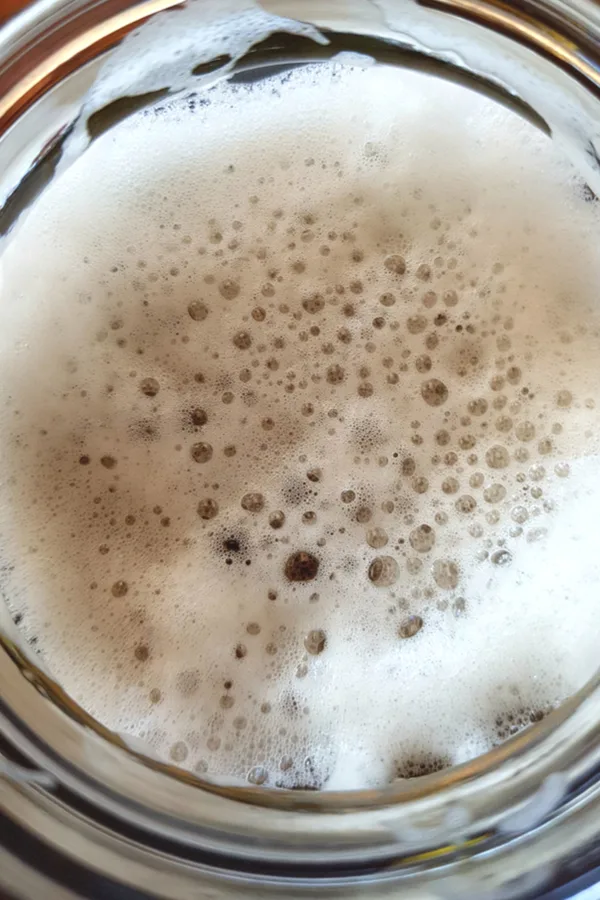
INSTRUCTIONS
The first step in making New Orleans Beignets is to proof the yeast. In a large bowl or stand mixer bowl, add the lukewarm water that is between 110-115°F when measured by an instant read digital thermometer.
Then sprinkle in the yeast and let it sit for 5 minutes or until it becomes bubbly. If the water doesn’t become frothy, that means your yeast is bad and you must start over.
It is extremely important for this recipe that the yeast is active. Otherwise, the doughnuts will not puff up as required during the frying process.
Make The Dough
In another bowl add the evaporated milk, sugar, salt, egg, and vanilla extract. Lightly whisk until the egg becomes incorporated. Then add it to the bowl with the yeast.
Slowly add 2 cups of flour, 1/2 cup at a time, and continue mixing with a hand or dough mixer. Keep mixing until the 2 cups of flour are no longer visible.
Next, pour in the melted butter and mix until the dough is smooth in texture. The dough will look smooth, but it will still be tacky. Add in additional flour, 1/2 cup at a time until the dough becomes soft and pliable.
You may not have to use the entire 4 cups of flour for the dough to come together. You will know that it is ready when dough easily releases from the side of the bowl and is only slightly sticky.
Place the dough onto a lightly floured surface and knead for 1-2 minutes. Add additional flour as needed as you go so that it doesn’t stick to the surface or your hands.
Grease the entire inside of a large, clean bowl with extra virgin olive oil. Then transfer the dough to the bowl. After you place the dough in the bowl, flip it over so the entire dough ball has been coated in the oil.
Cover the bowl loosely with a clean towel and let rise in a warm, draft-free place until doubled in size. Depending on the temperature of your house, it will take approximately 1-2 hours.
How To Get Dough To Rise Faster
If you are like me, sometimes waiting for dough to rise seems like an eternity. However, there are some other short cut methods for getting your New Orleans French Beignet dough to rise quicker.
1. The Steam Method
The most common way to get dough to rise faster is by placing the bowl near hot and steaming water. Do this by placing your covered bowl with the dough in the oven.
Then place 2-3 cups of hot, steaming water in a heat proof glass bowl and place it on a rack directly below the dough. Close the oven door and your dough will rise in half of the time.
2. Warm Oven Method
Another quick method to make your dough rise is to preheat your oven to 200°F. Once it reaches that temperature, turn the oven off.
Then when your dough is made and ready to rise, cover the bowl and place it in the warm oven.
3. Oven Light
Some people simply place the dough in an oven and turn on the oven light. The heat from the light is enough to speed up the rising process.
4. Instant Pot
If you have an Instant Pot with the Yogurt function, you can proof the dough in it as well. Simply place the dough inside the Instant Pot and place a glass lid on top.
Then push the yogurt button and within 30 minutes, your dough will be at the top of the bowl. Just another reason why I love my 6 quart Instant Pot Duo!
Make The Beignets
Now that your dough has doubled in size it is time to make your New Orleans French Beignets. Remove the dough from the bowl and punch down the middle of the dough so it deflates.
Place it on a clean, floured surface and roll it in a rectangular shape until it is about ⅓ inch in thickness. Then cut the dough into 1 1/2 – 2 inch rectangles or squares using a sharp knife or pizza cutter.
Sprinkle a little flour over top of the dough and cover with a clean towel. Let the dough sit and rise again for another 20 minutes.
While the dough is rising, heat the canola oil to 375°F (190°C) in a large Dutch oven or large pot. I find it best to use a pot thermometer to gauge the temperature when frying.
When the oil is hot, add a few doughnut squares to the oil and cook until they become puffy and golden brown on both sides. Continue to work in batches being sure not to over crowd the pan and allowing the oil to get back up to temperature before frying the next batch.
Remove the fried beignets from the oil and pat them on paper towels to absorb the excess oil. Immediately dust the tops with confectioner’s sugar.
Serve the French Beignets warm with a cup of Coffee and Chicory from New Orlean’s famous Cafe du Monde.
However, if you prefer to not eat fried foods, you can still make and enjoy these famous doughnuts with this Baked Beignets recipe.
Enjoy!
Mary and Jim

Jim and Mary Competti have been writing gardening, DIY and recipe articles and books for over 15 years from their 46 acre Ohio farm. The two are frequent speakers on all things gardening and love to travel in their spare time.
As always, feel free to email us at thefarm@owgarden.com with comments, questions, or to simply say hello! You can sign up for our free email list in the subscribe now box in the middle of this article. Follow us on Facebook here : OWG Facebook. This article may contain affiliate links.
French Beignets

Soft and pillowy doughnuts that taste just like the famous New Orleans Beignets.
Ingredients
- 3/4 cup lukewarm water
- 1.25-ounce packet active dry yeast
- 1/2 cup evaporated milk
- 1/3 cup sugar
- 1/8 tsp. salt
- 1 large egg
- 1 teaspoon pure vanilla extract
- 3 ¾ – 4 cups all-purpose flour
- 3 tablespoons unsalted butter, melted
- Canola oil, for frying
- Confectioner's sugar, for dusting
Instructions
- In a large bowl or stand mixer bowl, add the lukewarm water and yeast. Let it sit for 5 minutes or until it becomes bubbly.
- In another bowl add the evaporated milk, sugar, salt, egg, and vanilla extract. Lightly whisk and then add it to the yeast mixture.
- Slowly add 2 cups of flour, 1/2 cup at a time and continue mixing with a hand or dough mixer.
- Add melted butter and mix until the dough is sticky but smooth in texture. Add 1 1/2 - 2 cups of flour to make soft, pliable dough.
- Place the dough onto a lightly floured surface and knead for 1-2 minutes. Transfer the dough to a clean, greased bowl, turning once to coat the dough with oil. Cover loosely with a clean towel and let rise in a warm, draft-free place until doubled in size approximately 1-2 hours.
- Punch the dough down and remove it from the bowl. Place it on a clean, floured surface and roll it in a rectangular shape until it is about ⅓ inch in thickness.
- Cut the dough into 2 inch rectangles or squares using a sharp knife or pizza cutter. Cover the cut dough with a clean towel and let rise for 20 minutes.
- While the dough is rising, heat the oil to 375°F (190°C) in a large Dutch oven or large pot. When the oil is hot, add a few dough squares and cook until they become puffy and golden brown on both sides. Continue to work in batches being sure not to over crowd the pan.
- Remove the fried beignets from the oil and pat them on paper towels to absorb the excess oil.
- Immediately dust the tops with powdered sugar.Serve immediately
Notes
Recipe courtesy of Old World Garden Farms
Nutrition Information:
Yield:
30Serving Size:
1 BeignetAmount Per Serving: Calories: 278Total Fat: 3gSaturated Fat: 1gTrans Fat: 0gUnsaturated Fat: 1gCholesterol: 10mgSodium: 18mgCarbohydrates: 55gFiber: 2gSugar: 7gProtein: 7g
Nutritional Information is to be used as a general guideline only . Nutritional calculations will vary from the types and brands of the products used.

